Check out these virtual events coming up this month at NCA!
Read MoreIs a manufacturer required to report if a nut-free product was made in a facility that processes nuts?
Read MoreThis memorandum provides a detailed explanation of the expanded geographic preference option. CNP operators, State agencies purchasing for CNPs, and the USDA Department of Defense Fresh Fruit and Vegetable Program (USDA DoD Fresh) may use local as a specification and continue to set a geographic preference when soliciting or buying unprocessed agricultural products.
Read MoreWhere can you find allergens listed on a food’s packaging?
Read MoreCheck out these virtual events coming up this month at NCA!
Read MoreCheck out these virtual events coming up this month at NCA!
Read MoreWe’re thrilled to inform you that the 2024 National Child Nutrition Conference offers an excellent opportunity for you to earn Continuing Professional Education Units (CPEUs) while immersing yourself in a world of learning and networking.
Read MoreThe National CACFP Sponsors Association is excited to introduce the newest group of scholarship winners for the 2024 National Child Nutrition Conference!
Read MoreCheck out these virtual events coming up at NCA!
Read MoreThis memorandum provides a detailed explanation of the expanded geographic preference option. CNP operators, State agencies purchasing for CNPs, and the USDA Department of Defense Fresh Fruit and Vegetable Program (USDA DoD Fresh) may use local as a specification and continue to set a geographic preference when soliciting or buying unprocessed agricultural products.
Read MoreIn February 2024, USDA released the proposed rule Serious Deficiency Process in the CACFP and SFSP. After meeting with members and extensive research NCA has submitted our response to USDA stating our position on the proposed changes.
Read MoreWhile summer is a time for relaxation and vacation for some, it is a time of great uncertainty for many children who experience food insecurity. Afterschool and on the weekend, children are also unsure of where their meals will come from. That’s where Child Nutrition Programs step in.
Read MoreLast month, USDA released a final rule to better align Child Nutrition Programs with the 2020-2025 DGAs. NCA is glad to see such positive changes made to Child Nutrition Programs and commends USDA for their leadership in improving program vital to child food security.
Read MoreUSDA has requested comments on their proposed rule for the Serious Deficiency process for CACFP and SFSP. They need your feedback to help them determine what changes to make!
Read MoreThe USDA recently released a Final Rule that better aligns meal patterns in the CACFP, SFSP, and School Meals with the Dietary Guidelines for Americans.
Read MoreThe Child and Adult Care Food Program has new creditable foods listed on the USDA Food Buying Guide! If you are new to the FBG, this interactive tool allows for easy display, search, and navigation of food yield information. In addition, users can compare yield information, create a favorite foods list, and access tools, such as the Recipe Analysis Workbook (RAW) and the Product Formulation Statement Workbook.
Read MoreThe Child and Adult Care Food Program community asked for more Spanish resources to be available on the National CACFP Sponsors Association website and we heard you! Available now in Spanish are more resources to help sponsors and providers with meal pattern requirements, best practices, and so much more!
Read MoreServing meals to young people year-round benefits children, families, and care providers. To do this, many providers transition from operating the USDA Child and Adult Care Food Program (CACFP) At-Risk Afterschool (ARAS) during the school year to the Summer Food Service Program (SFSP) while school is out. For an overview of the main differences between SFSP and CACFP ARAS, see the comparison chart below.
Read MoreNCA understands that the end of flexibilities will cause challenges for many CACFP sponsors and providers and we commend your continued commitment to providing nutritious meals and snacks to the children or adults in your care. In preparation for the end of the additional reimbursement, we have collected the following resources to help you successfully provide meals even if your available budget decreases.
Read MoreCDC created three new fact sheets for Early Care and Education (ECE) providers about Early Child Nutrition and Feeding. The fact sheets offer tips and best practices for supporting breastfeeding families, information about safe storage and handling of breastmilk, and strategies for introducing solid foods.
Read MoreIs a manufacturer required to report if a nut-free product was made in a facility that processes nuts?
Read MoreWhere can you find allergens listed on a food’s packaging?
Read MoreWhat are the top nine most common food allergens?
Read MoreWhen serving a meal family style in the CACFP, when are meal counts taken?
Read MoreCan a family style meal be reimbursed if a child does not serve themself all of the food components offered?
Read MoreWhat can you do outside of meal service to prepare children for family style dining?
Read MoreThe Child and Adult Care Food Program has new creditable foods listed on the USDA Food Buying Guide! If you are new to the FBG, this interactive tool allows for easy display, search, and navigation of food yield information. In addition, users can compare yield information, create a favorite foods list, and access tools, such as the Recipe Analysis Workbook (RAW) and the Product Formulation Statement Workbook.
Read MoreThe Child and Adult Care Food Program community asked for more Spanish resources to be available on the National CACFP Sponsors Association website and we heard you! Available now in Spanish are more resources to help sponsors and providers with meal pattern requirements, best practices, and so much more!
Read MoreServing meals to young people year-round benefits children, families, and care providers. To do this, many providers transition from operating the USDA Child and Adult Care Food Program (CACFP) At-Risk Afterschool (ARAS) during the school year to the Summer Food Service Program (SFSP) while school is out. For an overview of the main differences between SFSP and CACFP ARAS, see the comparison chart below.
Read MoreNCA understands that the end of flexibilities will cause challenges for many CACFP sponsors and providers and we commend your continued commitment to providing nutritious meals and snacks to the children or adults in your care. In preparation for the end of the additional reimbursement, we have collected the following resources to help you successfully provide meals even if your available budget decreases.
Read MoreCDC created three new fact sheets for Early Care and Education (ECE) providers about Early Child Nutrition and Feeding. The fact sheets offer tips and best practices for supporting breastfeeding families, information about safe storage and handling of breastmilk, and strategies for introducing solid foods.
Read MoreThe 2022 FACTS Report suggests problems in food advertising to children, and the newly issued National Strategy on Hunger may offer a solution.
Read MoreThis is a broad overview of the newly published findings of the 2021 study conducted by the National Farm to School Network and Michigan State University’s Center for Regional Food Systems. Read the complete report for an in-depth look at their findings.
Read MoreThis review of the RAPID Survey is from our friends at Food & Research Action Center (FRAC). We agree with their analysis and concern about childhood hunger.
Read MoreThe study proposes critical steps to repair our nation’s fragile ECE system, including greater investment in CACFP, to ensure the nutrition, health, and development of young children during the COVID-19 pandemic and beyond. Taking steps to fix our previous underinvestment in these areas is essential for the nation’s future and recovery from the pandemic.
Read MoreA study published in the Journal of Nutrition Education and Behavior found that childcare sites participating in CACFP are more likely to provide nutritious food and beverages compared with non-CACFP sites
Read More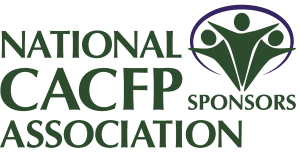








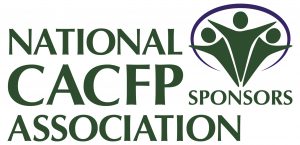





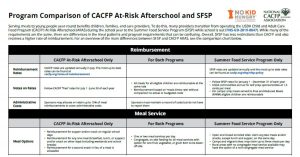

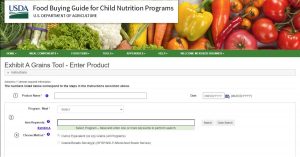
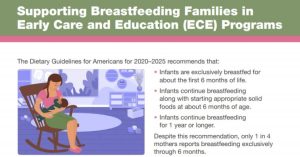








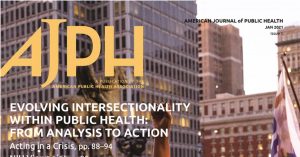





NCA Response – Proposed Rule for the Serious Deficiency Process
In February 2024, USDA released the proposed rule Serious Deficiency Process in the CACFP and SFSP. After meeting with members and extensive research NCA has submitted our response to USDA stating our position on the proposed changes.
Read More